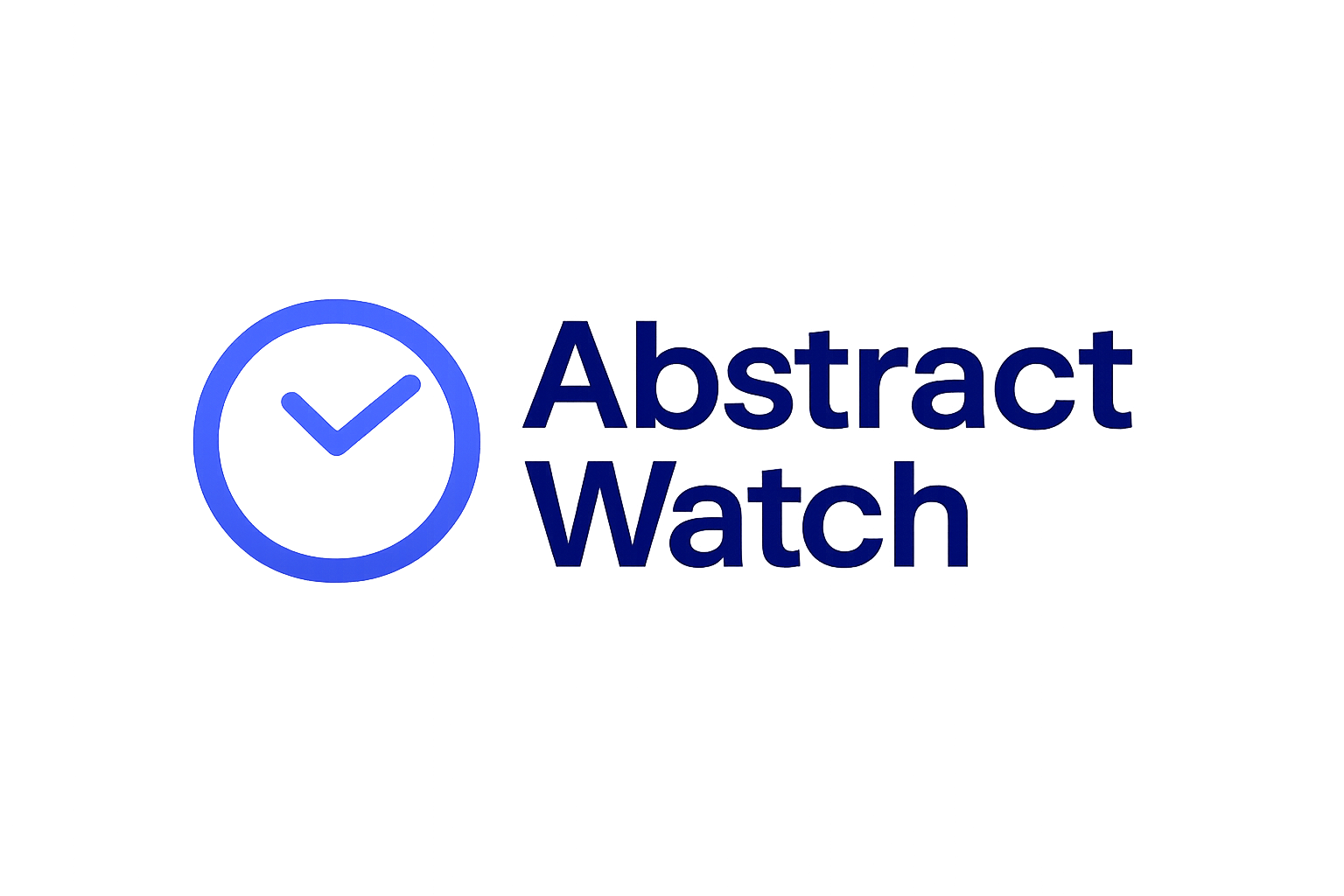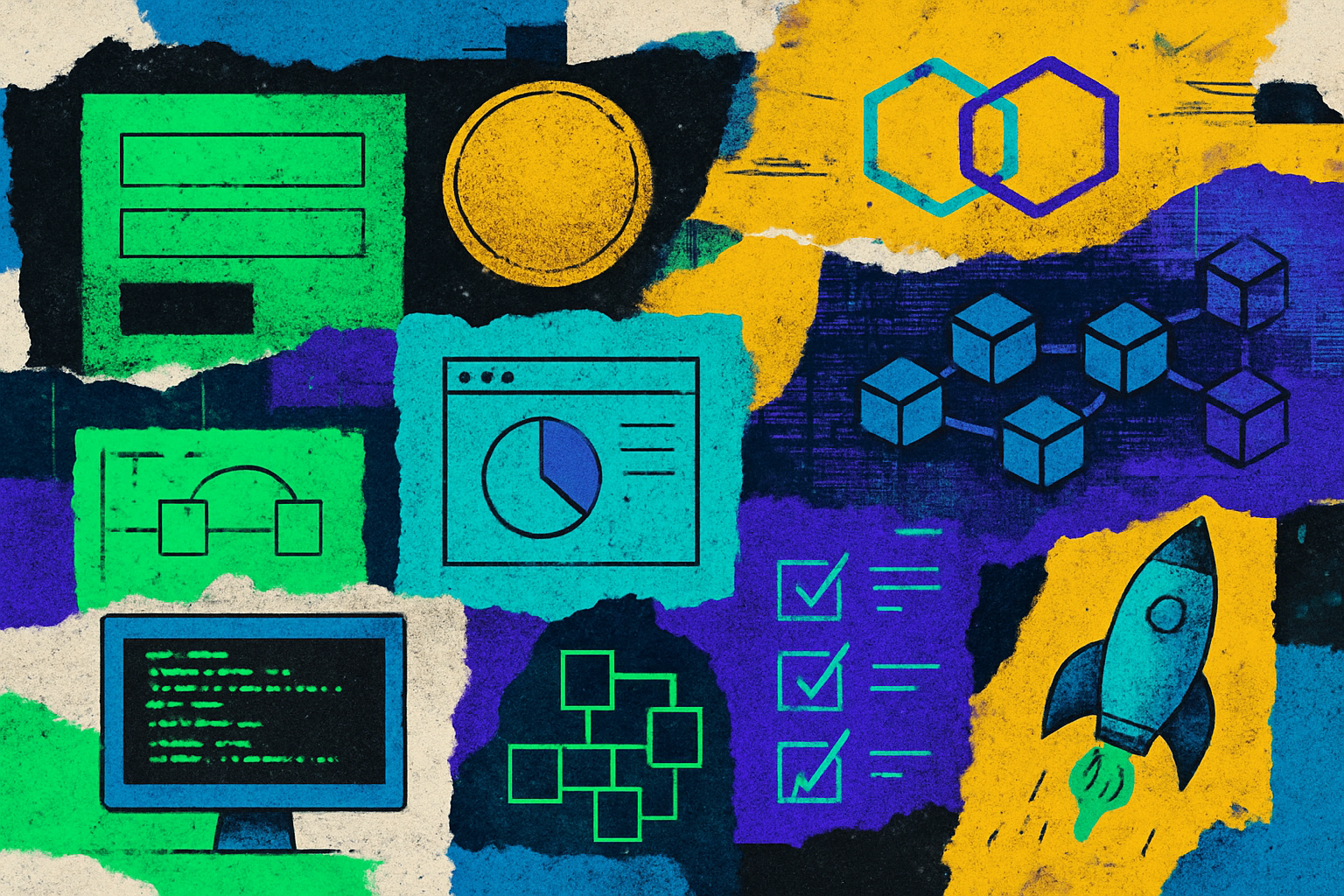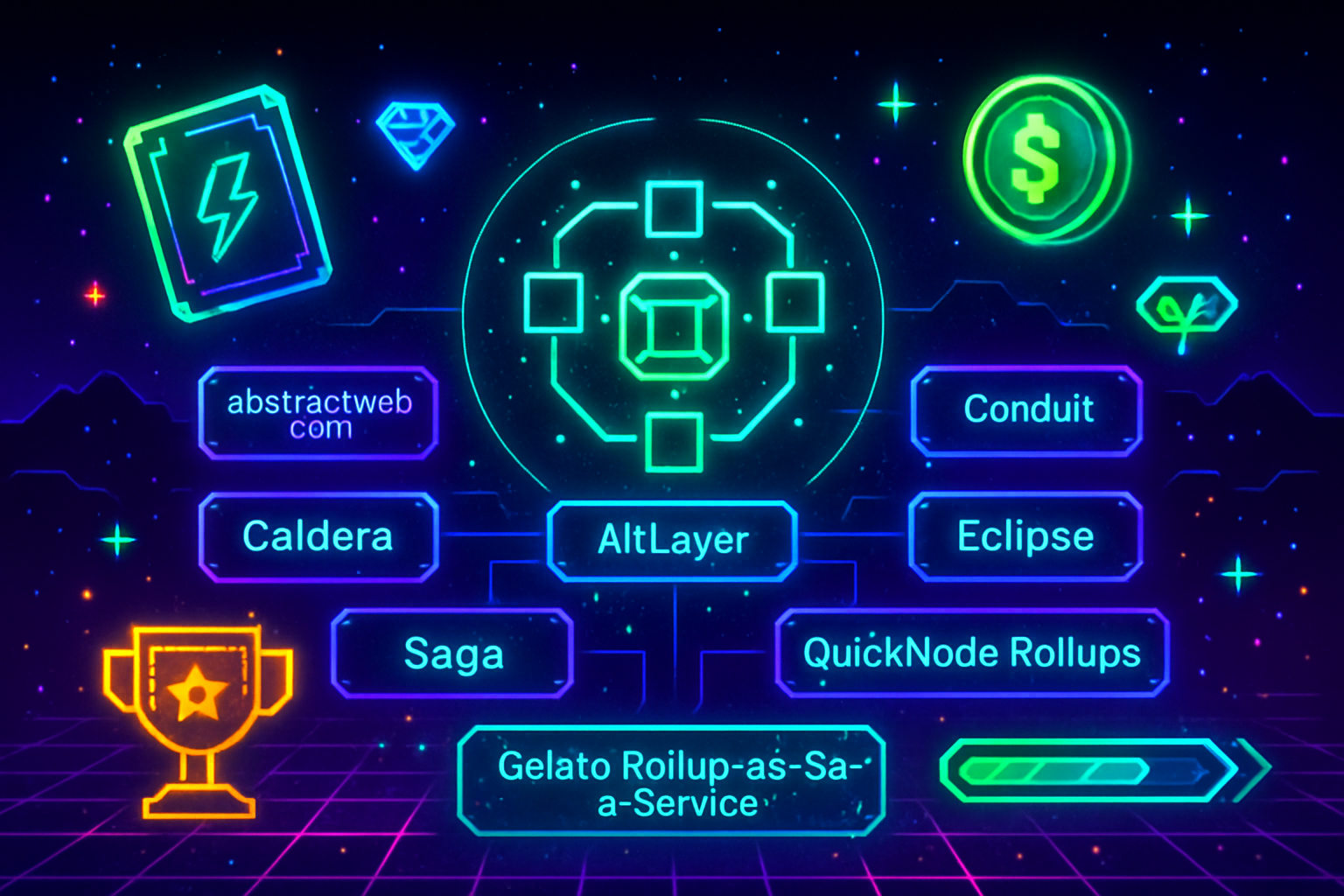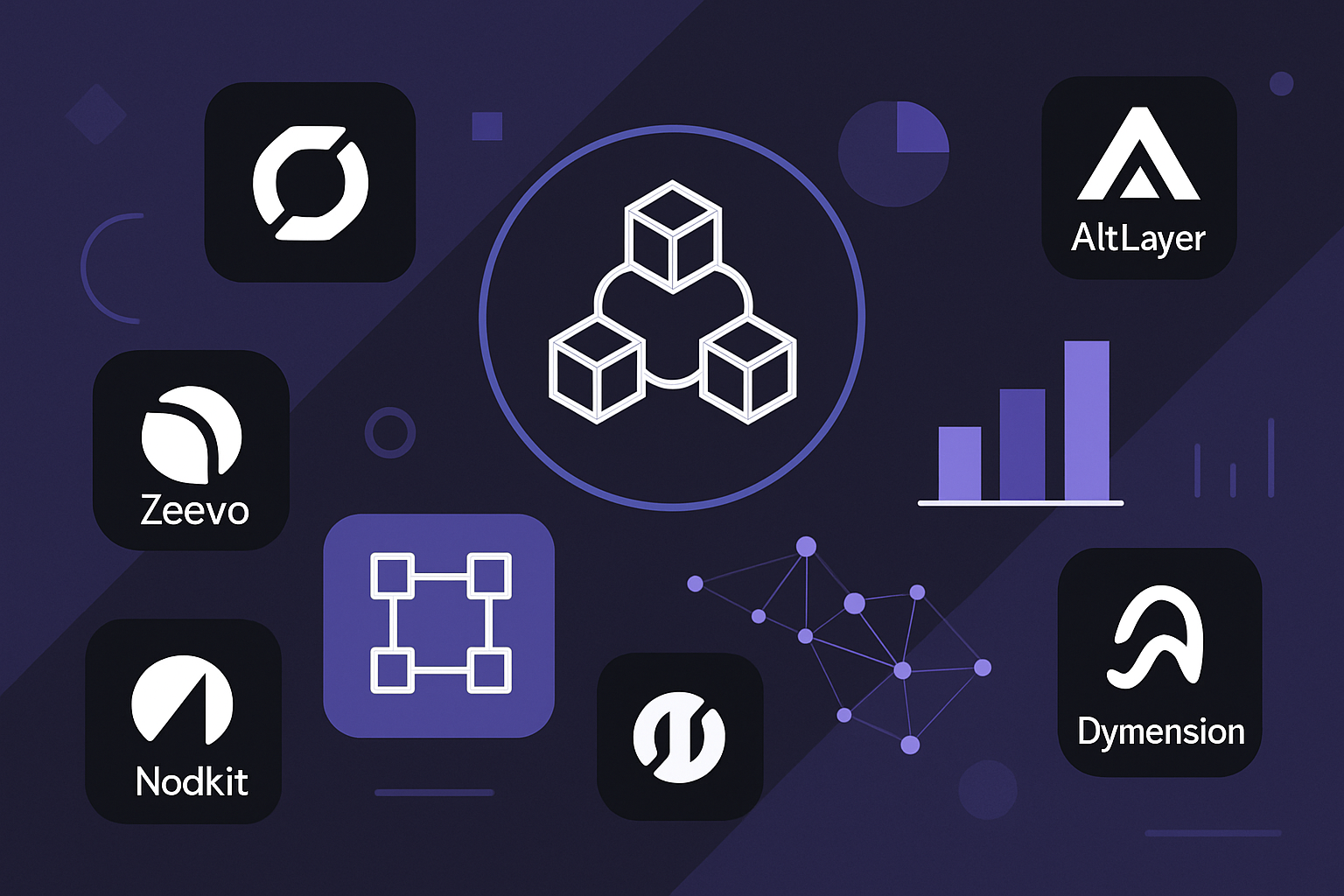
Launching a custom app-chain used to be a daunting task, reserved for teams with deep blockchain expertise and significant engineering resources. In 2025, the landscape has shifted dramatically. Thanks to the rise of Rollup-as-a-Service (RaaS) platforms, deploying scalable, secure app-chains is now within reach for startups, enterprises, and independent developers alike. These solutions abstract away the technical complexities of rollup infrastructure, letting you focus on building game-changing blockchain applications.

What Are App-Chains and Why Do They Matter?
An app-chain is an application-specific blockchain, tailored to serve a particular use case or ecosystem. Unlike general-purpose blockchains that must balance diverse needs across thousands of apps, app-chains offer dedicated blockspace and governance. This enables higher throughput, predictable fees, and custom logic, all critical for DeFi protocols, gaming universes, or enterprise consortia seeking performance without compromise.
The challenge? Building an app-chain from scratch requires deep knowledge of consensus mechanisms, data availability layers, sequencer networks, and much more. That’s where abstract rollup technology enters the picture: it lets developers process transactions off the main chain (Layer 1), then periodically post proofs back to ensure security and finality. RaaS platforms take this one step further by providing ready-to-use infrastructure for launching these rollups with minimal hassle.
The Rise of Rollup-as-a-Service (RaaS) Platforms
Rollup as a Service is rapidly becoming the backbone of modern blockchain scalability platforms. Rather than wrestling with the nuts and bolts of node deployment or protocol upgrades, teams can now spin up custom rollups, optimistic or ZK, with just a few clicks or API calls. The benefits are clear:
- No need for specialized blockchain engineers
- Faster time-to-market
- Bespoke configuration options
- Enterprise-grade reliability and monitoring tools
This new breed of platforms supports a wide array of frameworks and settlement layers, from Ethereum’s OP Stack to Polygon CDK and zkStack, empowering builders to choose exactly what fits their needs.
Key Players in the RaaS Ecosystem (2025 Edition)
The competition among RaaS providers is fierce, and that’s great news for developers seeking flexibility and performance. Here’s a quick overview of some leading solutions making waves this year:
- AltLayer: Modular stack supporting both optimistic and ZK rollups; seamless interoperability; shared security options.
- Zeeve: No-code platform powered by Polygon CDK; supports full-stack configuration from RPC endpoints to wallet integration.
- Ankr: Focused on OP Stack-based L2s; offers robust engineering support for independent chains tailored to unique use cases.
- Gelato: Enterprise-grade infra with low fees; no-code deployments across major EVM execution frameworks; built-in Web3 tools like bridges and indexers.
This diversity means you can prioritize what matters most, be it transaction speed, cost efficiency, compliance features, or seamless integration with existing ecosystems.
A Step-by-Step Overview: How Custom App-Chain Deployment Works Today
If you’re ready to launch your own custom blockchain rollup in today’s market, here’s how most projects are approaching it using RaaS platforms:
- Define Your Requirements: Start by identifying your application’s specific needs, think throughput targets, security preferences (optimistic vs ZK), interoperability demands, and regulatory considerations.
- Select Your Provider: Evaluate RaaS offerings based on supported frameworks (e. g. , OP Stack vs Polygon CDK), customization depth, uptime guarantees, support levels, and cost structure.
- Configure Your Chain: Use intuitive dashboards or APIs to set parameters like execution environment details, data availability layers (e. g. , Celestia), transaction fee models, whitelists/blacklists for validators or sequencers, and more.
- Deploy and Test: Launch your rollup in a sandbox environment first. Most RaaS providers offer built-in testnets so you can validate functionality before going live on mainnet.
Abstract rollup technology doesn’t just reduce operational headaches, it also enables rapid iteration. As your user base grows or new requirements emerge, you can adjust parameters or upgrade components without major downtime. This agility is crucial in today’s fast-moving blockchain landscape.
Comparing RaaS Providers: What Matters Most?
Choosing the right Rollup-as-a-Service partner can make or break your app-chain’s success. Here are some key criteria to weigh as you compare solutions:
- Supported Rollup Types: Does the provider support both optimistic and zero-knowledge (ZK) rollups?
- No-Code vs. Full Customization: Can you launch with no code at all, or do you need deep technical access for advanced features?
- Integration Ecosystem: Are bridges, oracles, data availability layers, and analytics tools built-in?
- Uptime and Reliability: Is there a robust SLA? What’s the historical uptime record?
- Support and Documentation: How responsive is their team? Is documentation clear and up-to-date?
Comparison of Top Rollup-as-a-Service (RaaS) Providers (2025)
| Provider | Rollup Types Supported | No-Code Deployment Option | Integrations | Uptime Guarantees |
|---|---|---|---|---|
| AltLayer | Optimistic, ZK Rollups | Not explicitly stated | Modular stack, DA layers, Sequencer networks | Not specified |
| Zeeve | Optimistic, ZK Rollups | Yes (Polygon CDK-powered no-code portal) | Blockchain configs, RPC, cloud infra, wallet integrations | Not specified |
| Ankr | Optimistic Rollups (OP Stack) | Not specified | OP Stack, engineering & infra support | Not specified |
| Gelato | Optimistic, ZK Rollups | Yes (no-code deployments on EVM frameworks) | Arbitrum Orbit, OP Stack, Polygon CDK, zkStack, oracles, bridges, indexers | Not specified |
The best fit depends on your project’s priorities. For example: DeFi teams may prioritize seamless Ethereum integration and ZK proof support; gaming studios might need ultra-low fees and high throughput; enterprises may look for compliance tooling and dedicated support.
Tips for a Smooth App-Chain Launch
- Pilot first: Test thoroughly on staging networks before mainnet launch to catch edge cases early.
- Leverage automation: Use built-in CI/CD pipelines or deployment scripts where available.
- Tune for growth: Monitor resource usage closely at launch; scale infrastructure as user demand ramps up.
- Engage your community: Early feedback from users helps identify pain points and feature requests quickly.
The rise of Rollup-as-a-Service platforms is democratizing blockchain application development. By abstracting away infrastructure headaches while offering deep customization options, these services let builders focus on what matters most, delivering unique value to their users.
If you’re contemplating a move to custom blockspace in 2025, now is the time to experiment with RaaS. The ecosystem is maturing rapidly: competition among providers means better pricing models, more robust tooling, and an ever-expanding menu of features designed for real-world use cases. Whether you’re launching a DeFi protocol that needs instant finality or a gaming world demanding sub-cent fees at scale, there’s never been a better moment to build with confidence.




